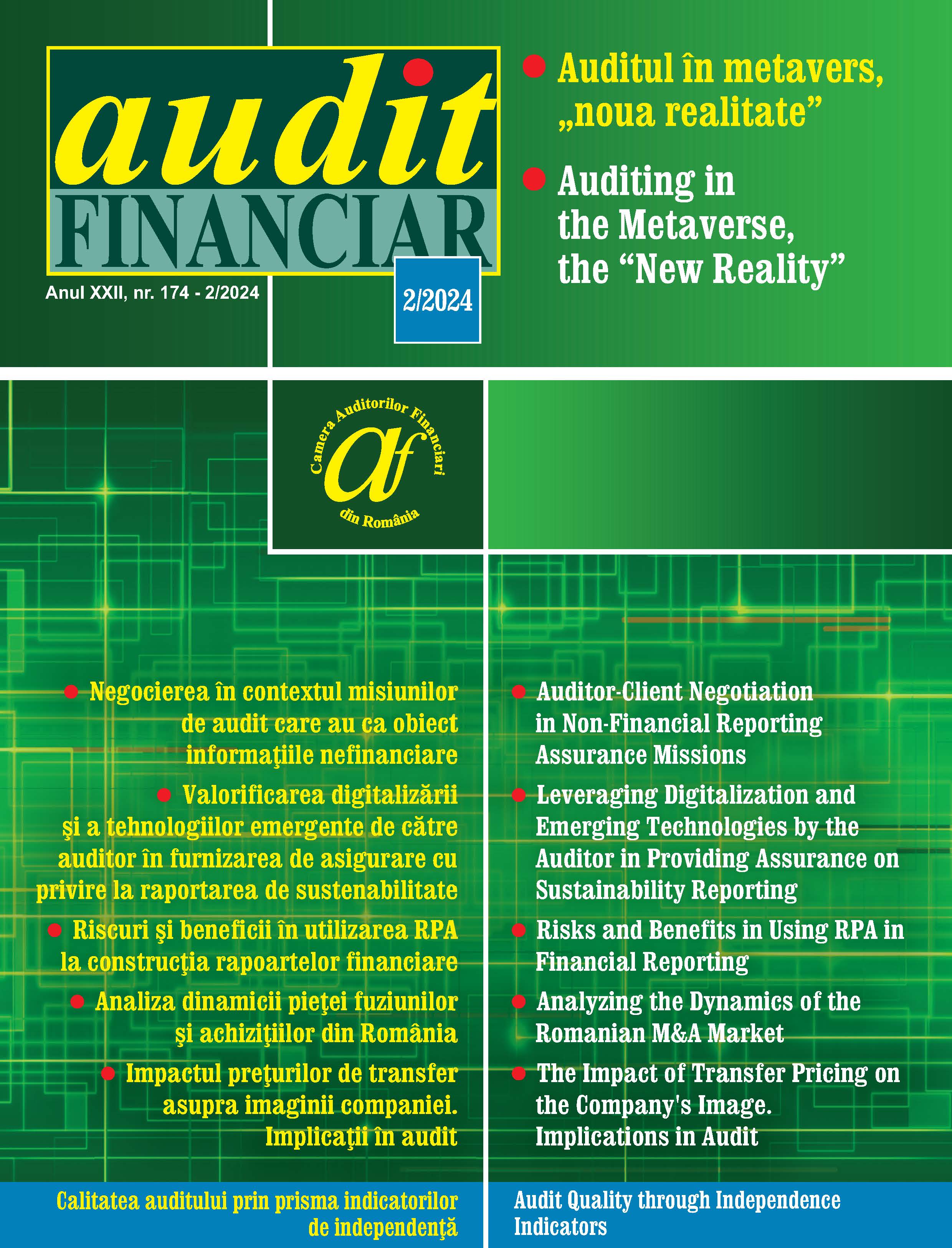Impactul preturilor de transfer asupra imaginii companiei. Implicatii in munca de audit
The Impact of Transfer Pricing on the Company’s Image. Implications in Audit Work
Author(s): Mihai Lupu, Magda Ghica, Cornelia NastaseSubject(s): Economy, Business Economy / Management, Business Ethics
Published by: Camera Auditorilor Financiari din România
Keywords: transfer pricing; groups of companies; audit; arm’s length principle; true and fair view principle;
Summary/Abstract: In an economy strongly marked by globalisation, transfer pricing is at the top of the agenda of taxpayers, tax authorities and regulatory bodies, with its influence manifested primarily in the fiscal area, respectively in the correct determination and proper allocation of the corporate tax base between different jurisdictions or between companies operating within the same jurisdiction. However, transfer pricing transcends the fiscal problematic and significantly influences other aspects of a company's life, one of which is the image reflected in the annual financial statements, including cash flows or financial performance indicators, and through their analysis, the investment decisions of potential users of accounting information. Transfer pricing is, therefore, also a reference point in the audit work carried out at the level of companies part of national or multinational groups and involved in significant intra-group transactions, as compliance or non-compliance with the arm’s length principle directly influences the way in which different elements of income, expenses, results, assets, equity or liabilities are reflected or not in accordance with the true and fair view principle and thus, ultimately, the audit opinion. National and international auditing standards provide recommendations and guidance on how to deal with transfer pricing issues as part of audit engagements, reflecting a continuing concern by professional bodies to develop best practices in this area. By studying the legislation in force and the available literature as well as by analysing (over a 5 year timeframe, i.e. 2018 - 2022) the information included in the annul financial statements of three companies listed on the Bucharest Stock Exchange, included in the "Constituents index - BET" category, which are part of a group and are involved in transactions with related parties, the objective of this article was to identify the main elements to be considered and analysed in the audit work with regard to transfer pricing. Following the research carried out, it can be concluded that, in accordance with the recommendations and requirements of national and international auditing standards, in the context of audit engagements carried out for companies involved in transactions with related parties, transfer pricing is one of the elements that should be subject to recurrent analysis as its impact on the result of the financial year but also on other elements included in the financial statements (e.g. payables, receivables, etc.) can be significant, directly influencing the true and fair view that they should reflect.
Journal: Audit Financiar
- Issue Year: 22/2024
- Issue No: 2(174)
- Page Range: 343-359
- Page Count: 17
- Language: English, Romanian

